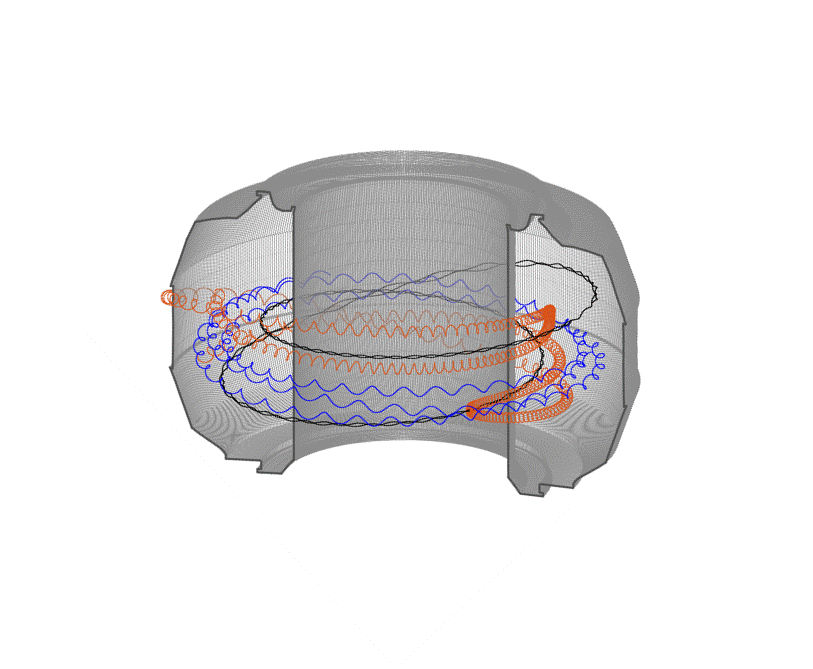
Filter News
Area of Research
- Advanced Manufacturing (12)
- Biology and Environment (16)
- Building Technologies (3)
- Clean Energy (54)
- Computational Biology (1)
- Computational Engineering (2)
- Computer Science (7)
- Electricity and Smart Grid (1)
- Energy Sciences (1)
- Fusion and Fission (2)
- Fusion Energy (6)
- Isotopes (1)
- Materials (12)
- Materials for Computing (4)
- Mathematics (1)
- National Security (3)
- Neutron Science (2)
- Nuclear Science and Technology (2)
- Quantum information Science (1)
- Sensors and Controls (1)
- Supercomputing (10)
News Type
News Topics
- (-) 3-D Printing/Advanced Manufacturing (31)
- (-) Big Data (17)
- (-) Biomedical (11)
- (-) Clean Water (13)
- (-) Fusion (9)
- (-) Grid (21)
- (-) Machine Learning (11)
- (-) Statistics (1)
- (-) Summit (6)
- (-) Sustainable Energy (45)
- Advanced Reactors (13)
- Artificial Intelligence (13)
- Bioenergy (16)
- Biology (18)
- Biotechnology (3)
- Buildings (19)
- Chemical Sciences (10)
- Climate Change (22)
- Composites (9)
- Computer Science (40)
- Coronavirus (11)
- Critical Materials (12)
- Cybersecurity (3)
- Decarbonization (9)
- Energy Storage (31)
- Environment (44)
- Exascale Computing (1)
- Fossil Energy (1)
- Frontier (1)
- High-Performance Computing (11)
- Hydropower (6)
- Irradiation (2)
- Isotopes (5)
- ITER (3)
- Materials (35)
- Materials Science (34)
- Mathematics (2)
- Mercury (3)
- Microscopy (11)
- Molten Salt (5)
- Nanotechnology (12)
- National Security (3)
- Net Zero (2)
- Neutron Science (27)
- Nuclear Energy (19)
- Partnerships (1)
- Physics (4)
- Polymers (9)
- Quantum Computing (4)
- Quantum Science (10)
- Security (1)
- Simulation (7)
- Space Exploration (10)
- Transportation (35)
Media Contacts

As the rise of antibiotic-resistant bacteria known as superbugs threatens public health, Oak Ridge National Laboratory’s Shuo Qian and Veerendra Sharma from the Bhaba Atomic Research Centre in India are using neutron scattering to study how an antibacterial peptide interacts with and fights harmful bacteria.

Gleaning valuable data from social platforms such as Twitter—particularly to map out critical location information during emergencies— has become more effective and efficient thanks to Oak Ridge National Laboratory.

Scientists have tested a novel heat-shielding graphite foam, originally created at Oak Ridge National Laboratory, at Germany’s Wendelstein 7-X stellarator with promising results for use in plasma-facing components of fusion reactors.

Oak Ridge National Laboratory scientists studying fuel cells as a potential alternative to internal combustion engines used sophisticated electron microscopy to investigate the benefits of replacing high-cost platinum with a lower cost, carbon-nitrogen-manganese-based catalyst.
![2018-P07635 BL-6 user - Univ of Guelph-6004R_sm[2].jpg 2018-P07635 BL-6 user - Univ of Guelph-6004R_sm[2].jpg](/sites/default/files/styles/list_page_thumbnail/public/2018-P07635%20BL-6%20user%20-%20Univ%20of%20Guelph-6004R_sm%5B2%5D.jpg?itok=DUdZNt_q)
A team of scientists, led by University of Guelph professor John Dutcher, are using neutrons at ORNL’s Spallation Neutron Source to unlock the secrets of natural nanoparticles that could be used to improve medicines.

Oak Ridge National Laboratory scientists have devised a method to control the heating and cooling systems of a large network of buildings for power grid stability—all while ensuring the comfort of occupants.

A team led by Oak Ridge National Laboratory has discovered that residents living in arid environments share a desire for water security, which can ultimately benefit entire neighborhoods. Las Vegas, Nevada’s water utility was the first utility in the United States to implement ...

The construction industry may soon benefit from 3D printed molds to make concrete facades, promising lower cost and production time. Researchers at Oak Ridge National Laboratory are evaluating the performance of 3D printed molds used to precast concrete facades in a 42-story buildin...

Oak Ridge National Laboratory scientists have improved a mixture of materials used to 3D print permanent magnets with increased density, which could yield longer lasting, better performing magnets for electric motors, sensors and vehicle applications. Building on previous research, ...

Fusion scientists from Oak Ridge National Laboratory are studying the behavior of high-energy electrons when the plasma that generates nuclear fusion energy suddenly cools during a magnetic disruption. Fusion energy is created when hydrogen isotopes are heated to millions of degrees...


